Research projects
Here you can find an overview of our main current research projects. However, we are also interested in other topics. Please have a look at our publications and contact us, if you are interested in a collaboration.Hunting and gathering hot subdwarf stars
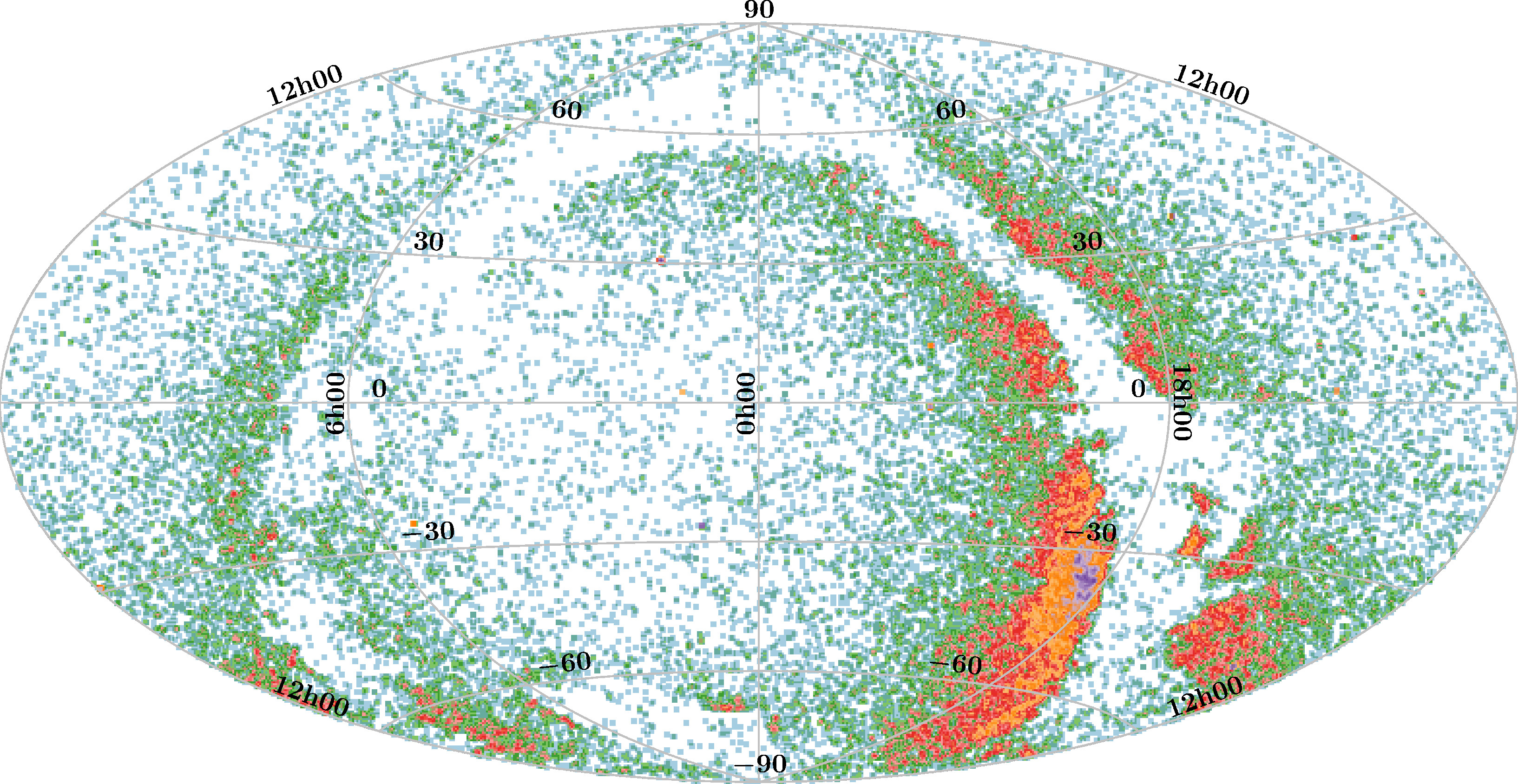
Geier et al. 2019, A&A, 621, 38
Hot subdwarfs play an important role in our understanding of binary evolution, stellar atmospheres and interiors and are key objects to study peculiar events, ranging from star-planet interactions to type Ia supernova progenitors. Analyses of large, complete, and volume-limited samples can therefore constrain a valuable variety of astrophysical topics.
We are working on compiling all-sky catalogues of hot subdwarfs, among them the first volume-limited samples of spectroscopically confirmed hot subdwarfs. Candidate samples are also compiled to provide target lists for large photometric (TESS, BlackGEM, LSST, PLATO) and spectroscopic surveys.
All our observations are uploaded to our database AOTS , which is accessible to the public.
As members of the 4MOST collaboration, we will conduct an all-sky survey for hot subluminous stars in the Southern hemisphere.
In addition to that, we also compile and follow-up all-sky samples of related objects such as extremely low-mass white dwarfs, blue horizontal branch stars and progenitors in the red-giant stage.
Dawson, H., Geier, S., Heber, U., et al.: A 500 pc volume-limited sample of hot subluminous stars I. Space density, scale height, and population properties, 2024, A&A, in press (arXiv:2403.15513)
Culpan, R., Geier, S., Reindl, N., et al.: The population of hot subdwarf stars studied with Gaia. IV. Catalogues of hot subluminous stars based on Gaia EDR3, 2022, A&A, 662, 40
Geier, S., Dorsch, M., Pelisoli, I., et al.: Radial velocity variability and the evolution of hot subdwarf stars, 2022, A&A, 661, 113
Observing and studying close binary stars
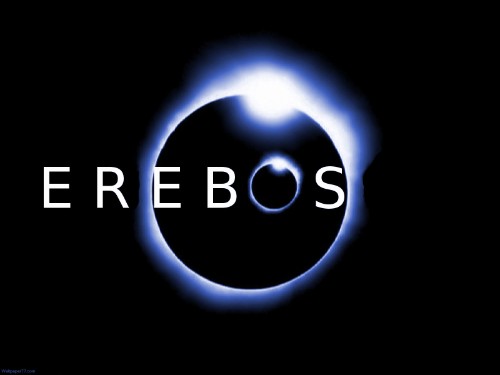
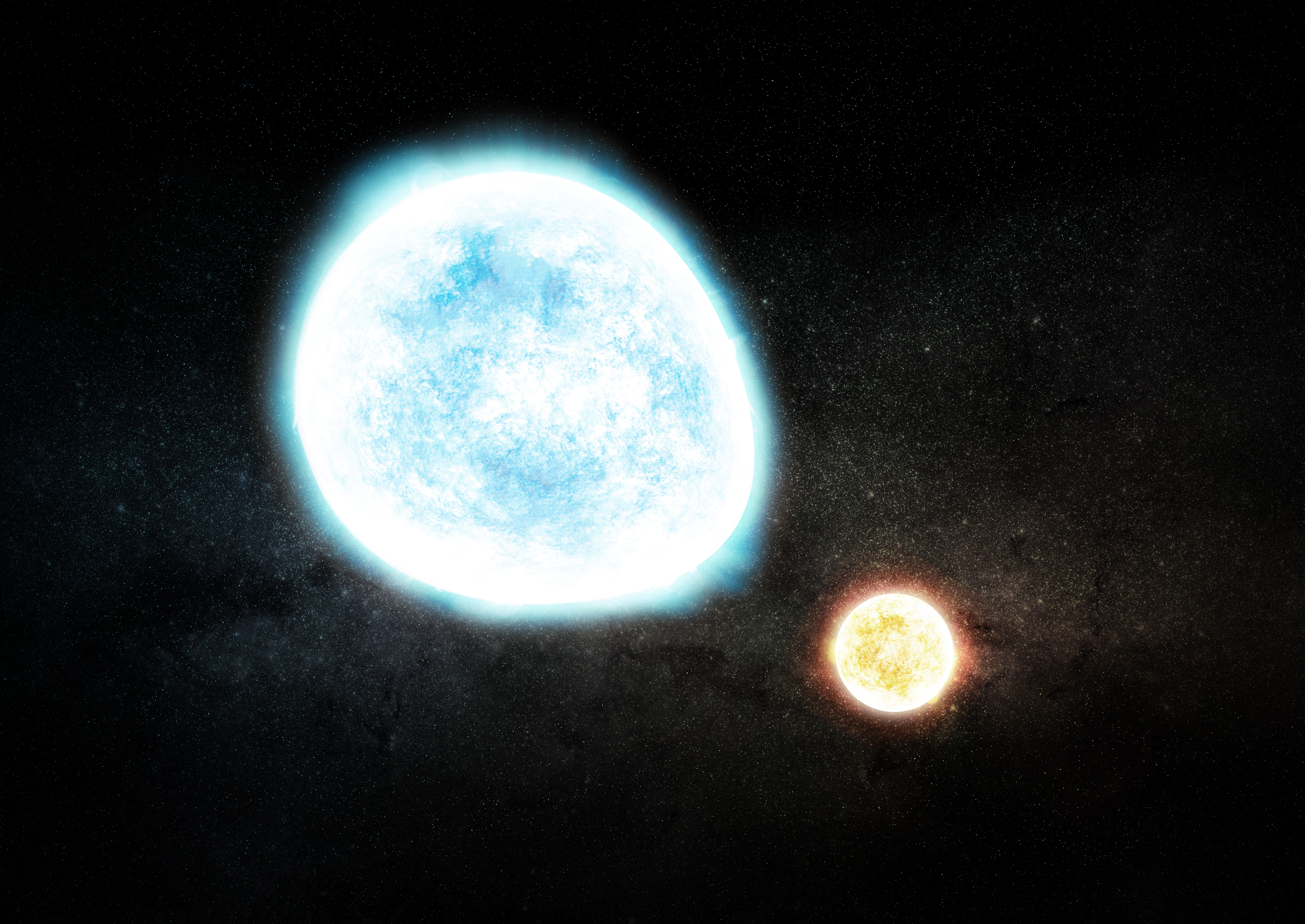
V. Schaffenroth/Artist's conception of extremely low mass detached double white dwarf binary. Credit: Melissa Weiss
Hot subdwarfs, extremely low-mass white dwarfs, as well as central stars of planetary nebulae are frequently found in close binary systems. Studying these systems allows us to understand the common envelope phase and the formation of asymmetrical planetary nebulae. We are also searching for the progenitor systems of supernovae Ia and verification binaries for gravitational wave detectors such as LISA.
Furthermore, these systems allow us to study the influence of substellar companions on late stellar evolution. For that we formed an international collaboration and were granted a Large Programme at the ESO-VLT (Eclipsing Reflection Effect Binaries from Optical Surveys, EREBOS). Our goal is to observe a newly discovered sample of eclipsing hot subdwarf binaries with low-mass companions, determine the fundamental parameters of those systems and search for substellar companions like brown dwarfs and hot Jupiter planets.
Currently we also make use of the Transiting Exoplanet Survey Satellite TESS, which is gathering light curves for thousands of nearby stars (including hundreds of hot subdwarfs and white dwarfs) with precision better than 1%. Although its primary goal is to find planets, the 2-minute cadence light curves obtained by TESS for pre-selected stars, are also ideal to search for variability effects caused by a binary companion, such as reflection and eclipses. We are members of the TESS Asteroseismic Science Consortium TASC and coordinate the efforts to observe compact close binaries. The brightness of TESS pre-selected targets also makes them ideal for ground-based follow-up, allowing for thorough characterisation of the observed systems and providing constraints for binary evolution models. As members of the BlackGEM collaboration, we will also study fainter close binaries based on multi-band light curves.
Schaffenroth, V., Barlow, B. N., Pelisoli, I., Geier, S., Kupfer, T.: Hot subdwarfs in close binaries observed from space. II. Analyses of the light variations, 2023, A&A, 673, 90
Schaffenroth, V., Pelisoli, I., Barlow, B. N., , Geier, S., Kupfer, T.: Hot subdwarfs in close binaries observed from space. I. Orbital, atmospheric, and absolute parameters, and the nature of their companions, 2022, A&A, 666, 182
Schaffenroth, V., Barlow, B. N., Geier, S., et al.: The EREBOS project: Investigating the effect of substellar and low-mass stellar companions on late stellar evolution. Survey, target selection, and atmospheric parameters, 2019, A&A, 630, 80
Hypervelocity and runaway stars
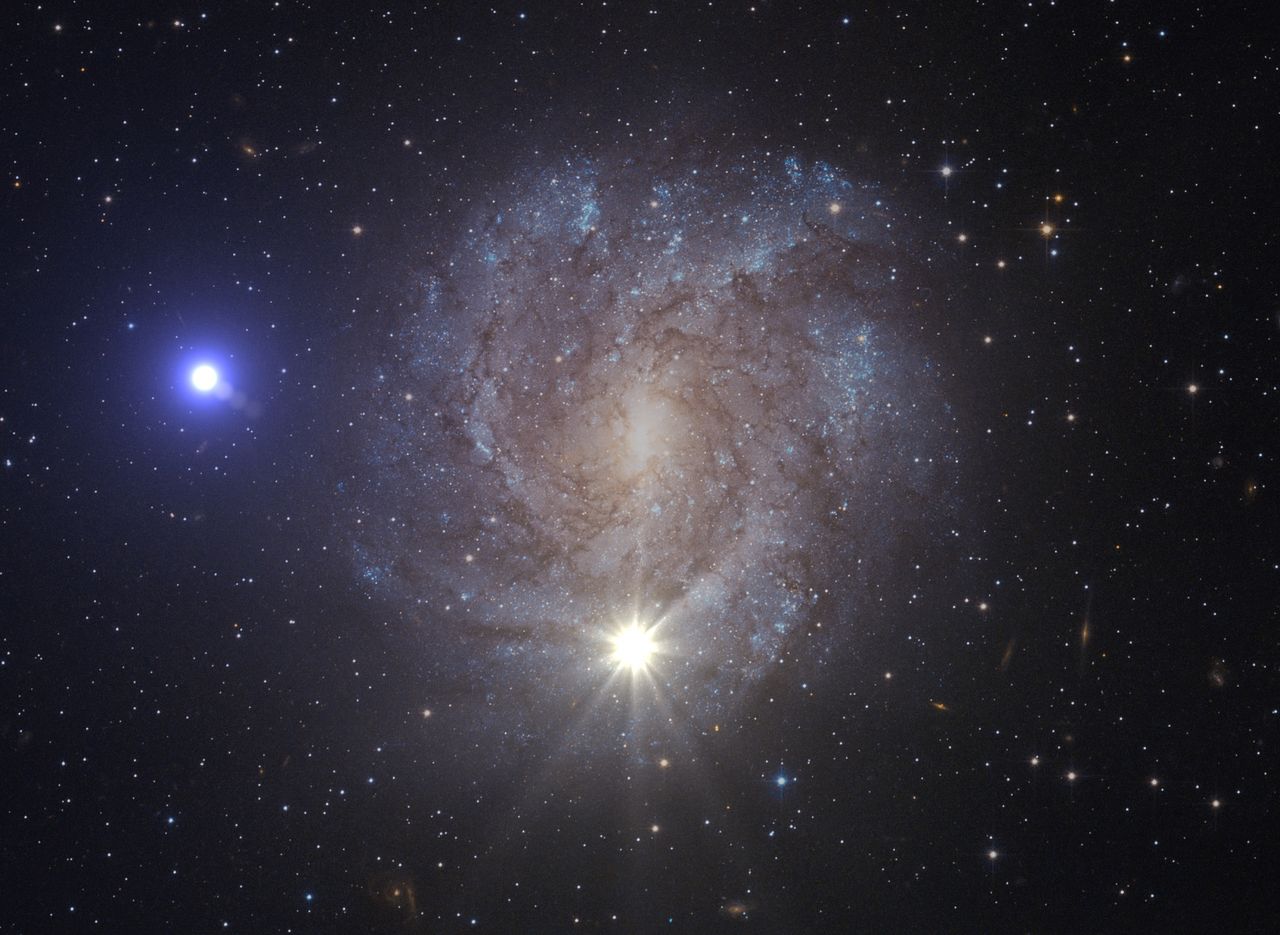
Runaway stars have been ejected from their birthplaces and are often found in unexpected environments. Hypervelocity stars (HVSs) even travel with velocities so extreme that they are unbound to the gravitational potential of our galaxy. Dynamical ejection in dense clusters, gravitational interactions with a massive black hole or ejections from tight binary by supernova explosions are discussed as possible ejection mechanisms.
Results of our analysis of the HVS-He-star US 708 provide observational evidence that there is a link between hypervelocity helium stars and supernova Ia, which might help us to understand the progenitors of those explosions better.
We perform spectroscopic surveys and refined kinematic analyses to find more fast hot subdwarfs like US 708 as well as to better characterize the population of other types of runaway stars in our Galaxy.
Irrgang, A., Geier, S., Heber, U., et al.: PG 1610+062: a runaway B star challenging classical ejection mechanisms, 2019, A&A, 628, 5
Press releases: Keck Observatory, Scientific American
Geier, S., Fuerst, F., Ziegerer, E., et al.: The fastest unbound star in our Galaxy ejected by a thermonuclear supernova, 2015, Science, 347, 1126
Press releases: IfA Hawaii, University Erlangen Radboud University Nijmegen Yunnan Observatory
Quantitative spectroscopic analyses of hot compact stars
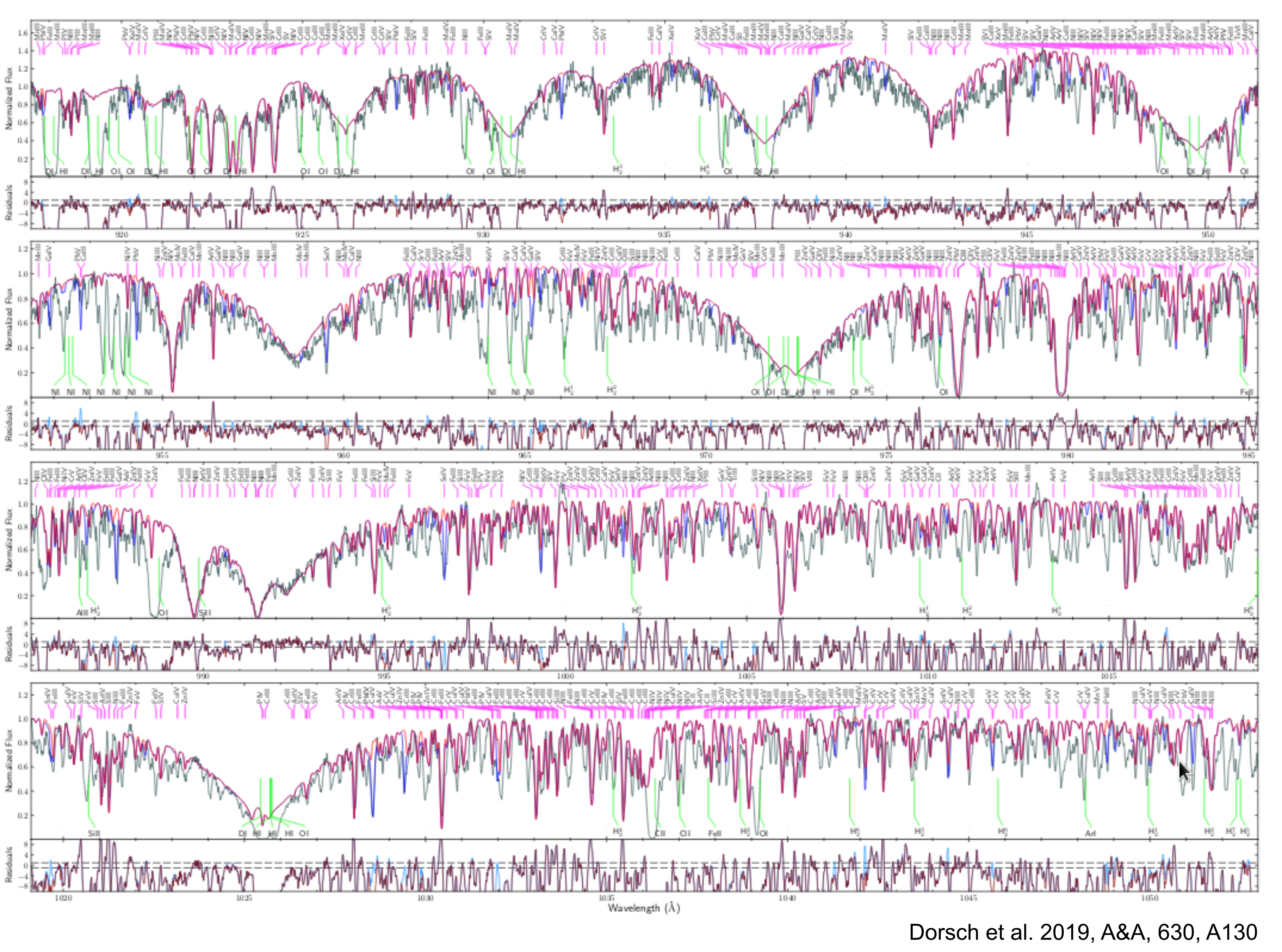
Quantitative spectroscopy is not only the key to understand the evolutionary of stars but also allows us to use hot subdwarfs and white dwarfs as laboratories for fundamental physics or powerful tools for Galactic archaeology and cosmology. We employ state-of-the art model atmosphere codes to analyse spectroscopic observations obtained from both ground-based and space-based observatories. Deriving the atmospheric parameters of hot subdwarfs, central stars of planetary nebulae, and hot white dwarfs, we are able to disentangle the various evolutionary paths of these objects, and in some cases even to study stellar evolution in real time. Most recently, our extensive surveys revealed a whole zoo of interesting objects including the first magnetic He-sdOB, an sdB with a disc and the whole new class of CO-sdOs.
Werner, K., Reindl, N., Geier, S., & Pritzkuleit, M.: Discovery of hot subdwarfs covered with helium-burning ash, 2022, MNRAS, 511, L66
Press releases: Potsdam University
Dorsch, M., Reindl, N., Pelisoli, I., et al..: Discovery of a highly magnetic He-sdO star from a double-degenerate binary merger, 2022, A&A, 658, L9
Irrgang, A., Geier, S., Kreuzer, S., et al.: A stripped helium star in the potential black hole binary LB-1, 2020, A&A, 633, 5L
Press releases: Potsdam University
Low mass white dwarf stars
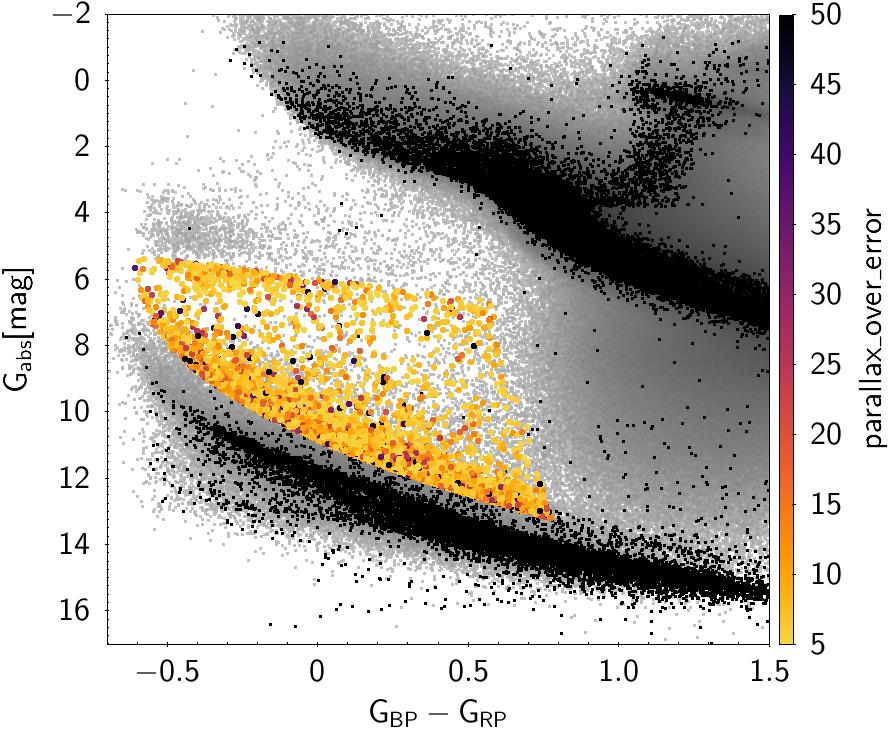
Pelisoli & Vos 2019, MNRAS, 488, 2892
Low-mass and extremely-low mass white dwarf stars (ELMs) are degenerate helium-core stars with mass below 0.5 solar masses, born either as a result of a common-envelope phase or after a stable Roche-lobe overflow episode in a multiple system. The Universe is not old enough for ELMs to have formed through single-star evolution channels. As remnants of binary evolution, (E)LMs can shed light onto the poorly understood phase of common-envelope evolution and provide constraints to the physics of mass accretion. Most known ELMs will merge in less than a Hubble time, providing an important contribution to the signal to be detected by upcoming space-based gravitational wave detectors. We have compiled the largest catalogue of ELM candidates from the Gaia DR2 data. This pioneer sample will serve as benchmark to test and improve binary evolution models, as well as contribute to interpret gravitational wave signals detected from space. In addition to that we also search for low-mass pre-WDs in other parts of the colour-magnitude diagram.
Pelisoli, I., & Vos J.: Gaia Data Release 2 catalogue of extremely low-mass white dwarf candidates, 2019, MNRAS, 488, 2892
Wide binary hot subdwarf stars
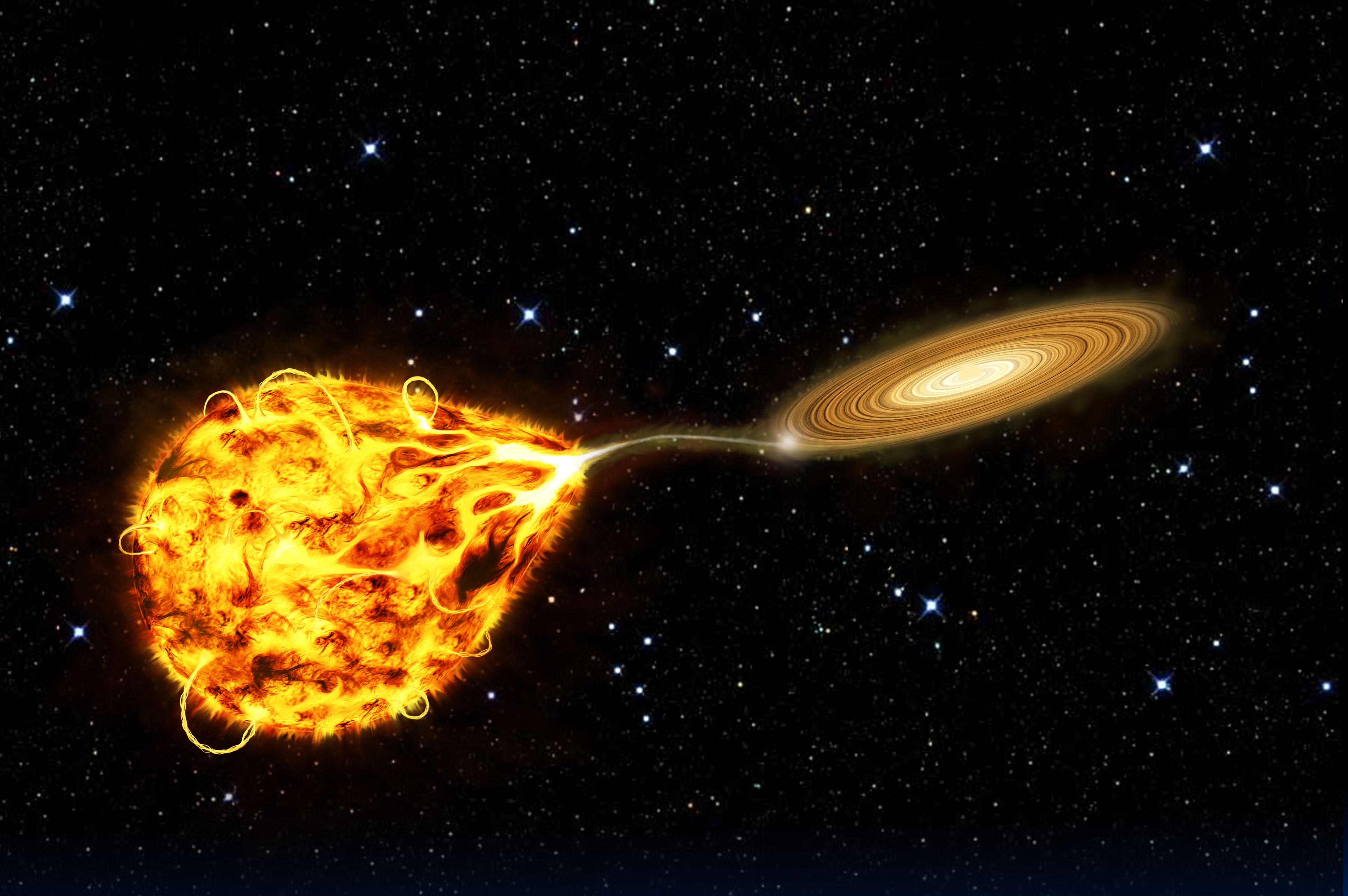
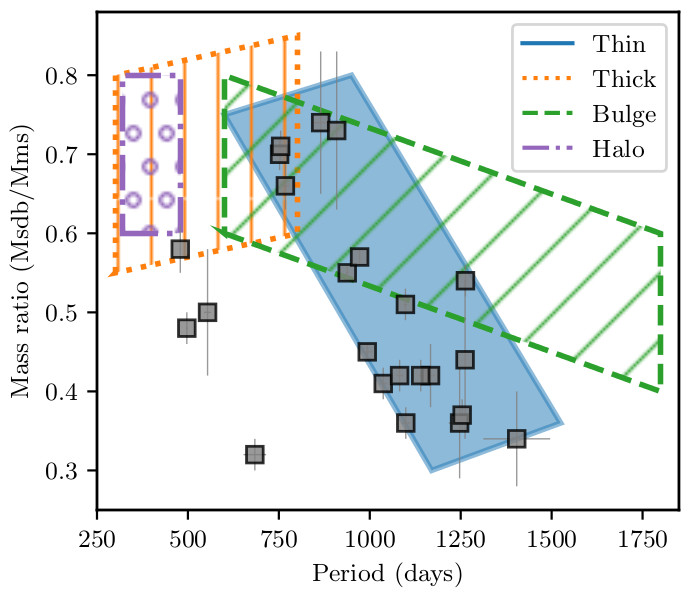
Hot subdwarf binaries are ideal systems to constrain binary interaction mechanisms. The majority of the hot subdwarf binaries are formed from low mass progenitors that ignite He under degenerate conditions. This places strong constraints on the mass of those stars. Furthermore, the only formation channels for sdB stars are through binary interactions. Wide sdB binaries with main sequence companions have the added advantage that they are double-lined systems allowing to constrain both components based on spectroscopic observations. Even though it takes years to solve the orbits, we currently have a reasonable sample that can be used as a test ground for binary interactions.
Interesting correlations found in the orbital properties of wide sdB+MS binaries are the increasing eccentricity with increasing orbital period and a strong relation between the mass ratio and the orbital period. The observed properties indicate that eccentricity pumping mechanisms are at play during the mass-loss phase, including the formation of a circumbinary disk. The correlation between orbital period and mass ratio is likely caused by Galactic evolution, specifically the metallicity gradient with time. We are searching for more wide sdB binaries making use of data from our ongoing surveys and in particular the astrometric solutions provided by Gaia. Based on this new type of data we discovered a new class of wide hot subdwarfs binaries with compact companions like white dwarfs or neutron stars.
Geier, S., Dorsch, M., Dawson, H., et al.:The first massive compact companion in a wide orbit around a hot subdwarf star, 2023, A&A, in press (arXiv:2305.03475)
Vos, J., Vuckovic, M., Chen, X., et al.: The orbital period-mass ratio relation of wide sdB+MS binaries and its application to the stability of RLOF, 2019, MNRAS, 482, 4592